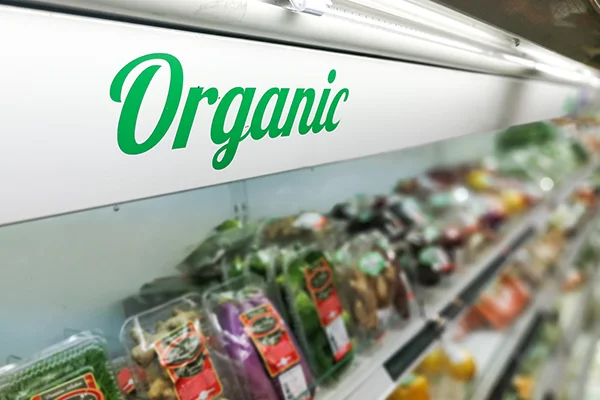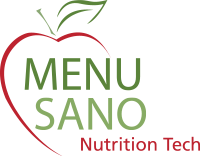Precision, compliance, and accuracy are non-negotiable when submitting a label for approval to the USDA’s FSIS. Labelling errors cause delays and result in rejected products, regulatory citations, and loss of market trust. Here, we outline the top 10 labelling mistakes that commonly lead to setbacks and how to avoid them to ensure swift FSIS approval.
Key Takeaways
- Inaccurate or missing product names.
- Misuse of nutrient content claims.
- Missing or incorrect Safe Handling Instructions.
- Improper allergen declarations.
- Inaccurate or poorly formatted net weight statements.
- Incomplete or non-compliant ingredient lists.
- Unauthorized marketing claims or unapproved graphics.
- Incorrect or missing establishment number formatting.
- Omitted handling or storage instructions.
- Improper font size or incorrect placement of required label elements.
1. Inaccurate or Missing Product Name
One of the most frequent mistakes is submitting a label with a misleading, vague, or incorrect product name. FSIS regulations require that product names be standardized or descriptive, depending on the food item.
Avoid this by:
- Use FSIS-approved product names when available.
- For non-standardized products, clearly describe the nature of the food (e.g., “Seasoned Ground Beef Patties” instead of just “Beef Patties”).
- Referring to the FSIS Food Standards and Labelling Policy Book to confirm the correct nomenclature.
2. Misuse of Nutrient Content Claims
Claims such as “low fat,” “high protein,” or “reduced sodium” are tightly regulated. Improper use of these claims without meeting the threshold criteria or lacking supporting documentation will cause delays or outright rejection.
To comply:
- Only use nutrient claims that meet FDA and FSIS criteria.
- Maintain documentation to substantiate any claim made on the label.
- Clearly indicate how the product qualifies for the claim of nutrient content.
3. Missing or Incorrect Safe Handling Instructions

Raw and partially cooked meat and poultry products must display FSIS-mandated Safe Handling Instructions. Omitting this label or altering the official formatting will cause disapproval.
Ensure compliance by:
- Using the FSIS-mandated safe handling icon and language.
- Do not modify the required warning’s wording, format, or font.
- Ensure the statement is clearly visible and placed appropriately.
4. Improper Allergen Declaration
Allergens must be explicitly identified in the ingredient statement or a separate “Contains” statement. FSIS follows the Food Allergen Labelling and Consumer Protection Act (FALCPA) for allergen declarations.
Common errors include:
- Failing to list a major allergen such as milk, eggs, fish, shellfish, peanuts, tree nuts, wheat, or soy.
- Using ambiguous terms like “natural flavours” without disclosing if they contain allergens.
- Forgetting cross-contact disclosures when necessary.
5. Missing or Inaccurate Net Weight Statement
The net weight statement must follow precise formatting rules based on FSIS guidelines. Non-compliance can result from incorrect font size, placement, or units (e.g., not using both metric and U.S. customary units when required).
Get it right by:
- Placing the net weight in the lower 30% of the principal display panel (PDP).
- Using legible type that meets minimum size requirements.
- Ensuring weight declarations are accurate and up to date for varying product sizes.
6. Incomplete or Non-Compliant Ingredient Statements
Labels must list all ingredients in descending order of predominance by weight, using their common or usual names. Mistakes often include incorrect order, omission of sub-ingredients, or use of imprecise terminology.
Correct this by:
- Listing every ingredient, including those used in spices, flavourings, and colourings.
- Providing full transparency through sub-ingredient lists (e.g., “Bread Crumbs (Wheat Flour, Salt, Yeast)”).
- Cross-checking with the Code of Federal Regulations (CFR) for permitted ingredient terms.
Read more: How to Add an Ingredient List to Your Nutrition Label
7. Unauthorized Claims or Graphics

Terms like “natural,” “organic,” or “humanely raised” require prior approval and supporting documentation. Similarly, a common pitfall is using certification logos or seals without proper licensing and FSIS review.
To avoid rejection:
- Do not use certified claims or graphics (e.g., USDA Organic, Non-GMO, Halal) without appropriate documentation.
- Get approval for all claims and images implying health or quality benefits.
- Avoid unverified third-party certifications unless explicitly allowed.
8. Inconsistent Establishment Number Format
The establishment number, usually found near the inspection legend, must be formatted correctly, and the facility responsible for production must be identified.
Avoid delays by:
- Including the complete and correct Est. number (e.g., “Est. 1234” or “P-4567”).
- Positioning it adjacent to the inspection legend.
- Ensure that the establishment number matches the facility listed in the application.
9. Omitted Handling or Storage Instructions
Perishable products often require temperature-based storage instructions (e.g., “Keep Refrigerated” or “Keep Frozen”). Omission of these directions compromises food safety and results in label rejection.
Stay compliant by:
- Clearly displaying handling instructions based on product type.
- Using language that reflects the product’s storage requirements throughout its shelf life.
- Avoid vague instructions—be specific with temperature ranges when necessary.
10. Improper Font Size and Placement
Every required element on a label must be in a readable font size and in the correct location on the packaging. Many delays occur because critical information is too small, obscured, or on the wrong panel.
Ensure readability by:
- Using at least 1/16 inch in height for required text on containers with more than 5 square inches of PDP.
- The product name, net weight, and inspection legend are placed on the principal display panel.
- Verifying font contrast and visibility under normal retail conditions.
Read more: The Ultimate Guide to FDA Nutrition Label Fonts and Sizes
How MenuSano Simplifies FSIS Label Compliance
MenuSano’s nutrition analysis software and food labelling are designed to help food manufacturers, processors, and restaurants effortlessly comply with FSIS labelling requirements. With a built-in database of regulatory standards, MenuSano allows you to generate compliant Nutrition Facts Labels, Supplement Facts Labels, and ingredient declarations quickly and accurately. Whether you need to validate nutrient claims, confirm allergen statements, or produce CFIA or FDA-compliant labels, MenuSano simplifies the process, reducing time-to-market and minimizing costly labelling errors. Our platform ensures that every label detail aligns with FSIS regulations.
Avoiding these common mistakes is not just about ticking regulatory boxes—it’s about ensuring consumer safety, building brand credibility, and streamlining time to market. Submitting a label that meets FSIS requirements from the start can significantly reduce approval timelines and protect your product’s reputation.




















